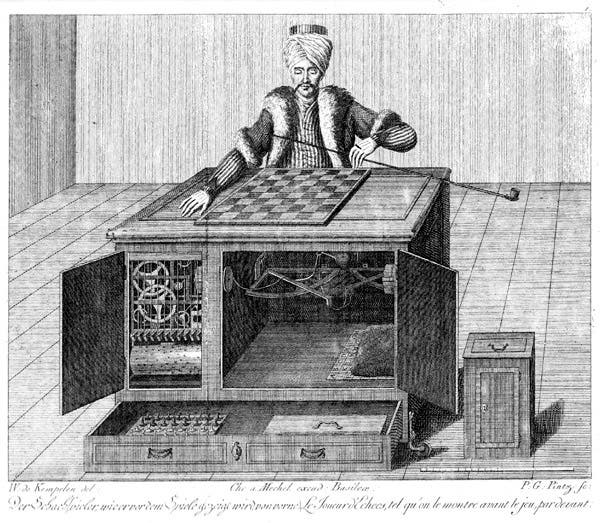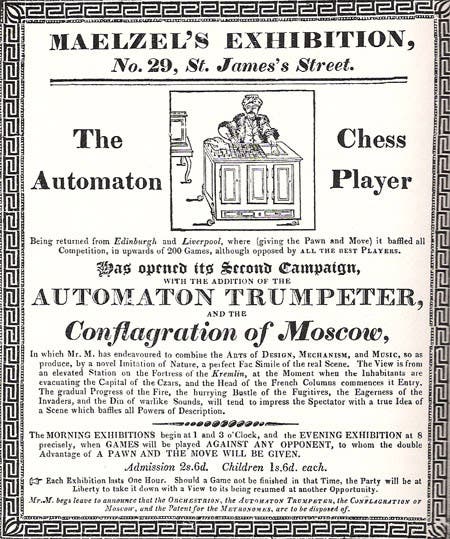Scientist of the Day - Johann Nepomuk Maelzel
Johann Nepomuk Maelzel, a German musician, inventor, and showman, was born Aug. 15, 1772, in Regensburg. Maelzel invented and built several musical automata. One, known as the Panharmonicon or Orchestrion, could produce all the sounds of a full orchestra; the first one appeared in 1804. Another was an automated trumpet player (1809), which (unlike the Panharmonicon) actually looked like a human musician and played better than most.
Maelzel is also known for being an on-again, off-again, friend of Ludwig van Beethoven. Beethoven actually wrote a piece for Maelzel's Panharmonicon, “Wellington’s Victory,” and the two intended to travel to England together, a trip that was never realized as their relationship soured. Maelzel even made some ear-trumpets for Beethoven, as his deafness grew worse. Four Maelzel ear-trumpets (second image), made about 1813, survive in the Beethoven Haus in Bonn (if you search for Maelzel on the Beethoven Haus website, be sure to use the German spelling “Mälzel” as your search word).
In 1816, Maelzel patented and began manufacturing his Metronom (employing a design that he seems to have stolen from a Dutch inventor, Dietrich Winkel) (first image). Beethoven began to assign Maelzel's Metronom markings (MM) to his late symphonies, and it was long believed that Beethoven wrote a joke canon, the “Maelzel Canon” or the “Ta-ta-ta Canon,” which mimics the ticking of a metronome. You can hear the short, 1-minute canon here, should you so wish. Unfortunately for the story, it has recently been shown that the ditty was almost certainly written by Beethoven's first editor and biographer, Anton Schindler, who is known to have perpetrated quite a few other Beethoven-related forgeries.
Maelzel's best-known claim to fame is that he purchased the automated chess player, "The Turk," built by Wolfgang von Kempelen, after von Kempelen died in 1804 (third image). Invented in 1769, the Turk was advertised as a chess-playing automaton, but it was actually a pseudo-automaton, and its secret lay not in its gears and wheels, but in the cramped chess master who was packed within. After buying the Turk, Maelzel fixed it up, enlisted his own inner chess master, and actually engaged Napoleon in a game in Vienna in 1809, which caused quite a sensation. Maelzel sold the Turk for an enormous sum, then bought it back again and toured England with it for some years. A broadsheet for a London performance mentions that the Panharmonicon, the Trumpeter, and a new attraction, a panorama, The Conflagration of Moscow, were for sale (fourth image).
Then, in 1826, Maelzel took the Turk, a Panharmonicon, the panorama, and the Trumpeter (none of which apparently had attracted any buyers in England) to the United States, where he would spend most of the rest of his life. He performed mainly in New York, Boston, and Philadelphia, and in 1835, he demonstrated the Turk in Richmond, Va., where he was observed by Edgar Allen Poe, who promptly wrote an essay, "Maelzel's Chess Player," in which he claimed to have deduced the Turk's secret (he had not; you can read the complete essay here). Maelzel’s shows were quite popular. There was a historic plaque in Philadelphia (5th St. and St. James) commemorating Maelzel's performances in that city, although recent visitors have reported that the marker is missing (fifth image). This webpage provides much useful information on the marker and Maelzel’s career in Philadelphia.
It is too bad that we remember Maelzel primarily as a showman, huckster, and patent thief, since he was by all accounts an excellent musician, and used to accompany his Trumpeter at concerts. He was also clearly an inspired inventor, since the Trumpeter impressed nearly everyone, and he was smart enough to recognize, after attempting for some years to perfect a metronome, that Winkel’s device was superior to his own and to patent it under his own name. Unscrupulous, yes, but a man who knew a good invention when he saw one.
None of the portraits that come up when you search for Maelzel seem valid to me, so I do not include one here. Maelzel died at sea, on a trip to the West Indies in 1838, so we cannot link to a grave either. The Turk burned up in a Philadelphia fire in the 1850s. The historical marker in Philadelphia is gone. Except for the four ear trumpets in Bonn and a few metronomes, we do not have much to remember Maelzel by. Someone needs to find that Philadelphia historical marker and get it back in place. It was just about all we had left of Maelzel in the United States.
William B. Ashworth, Jr., Consultant for the History of Science, Linda Hall Library and Associate Professor emeritus, Department of History, University of Missouri-Kansas City. Comments or corrections are welcome; please direct to ashworthw@umkc.edu.











